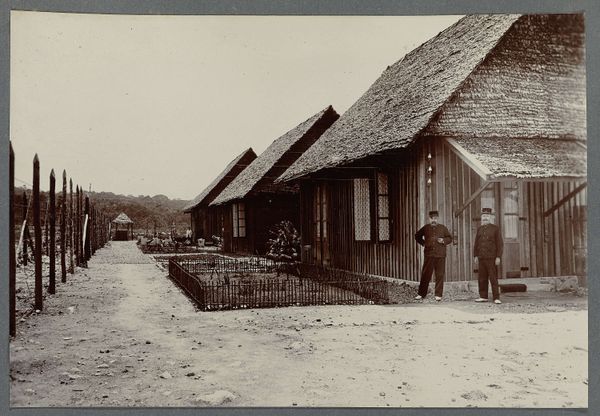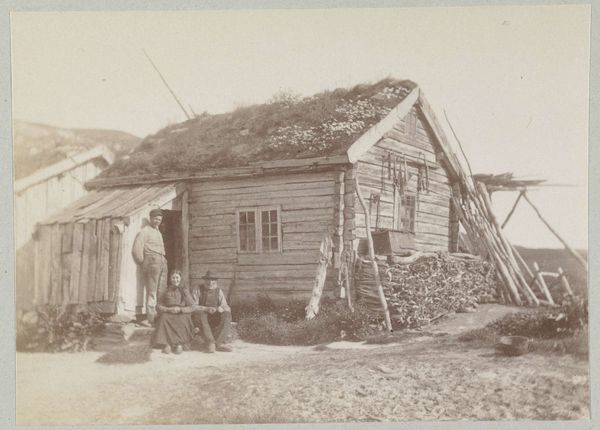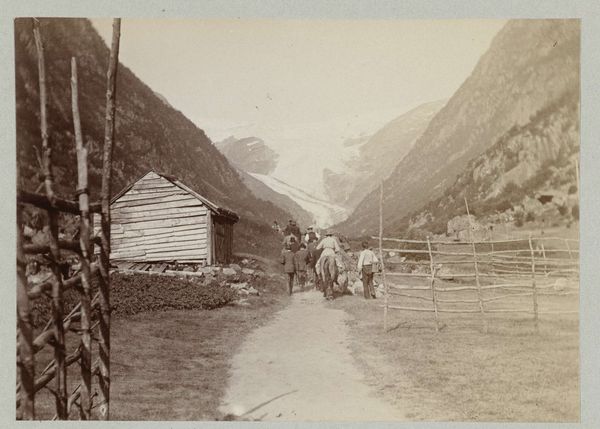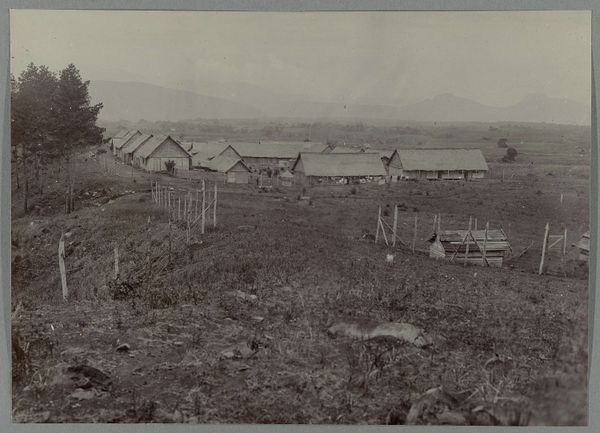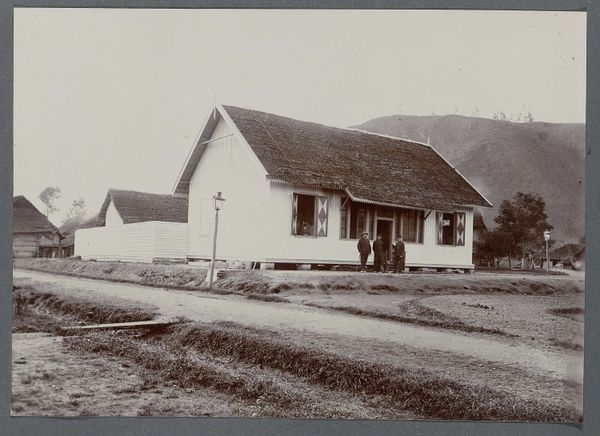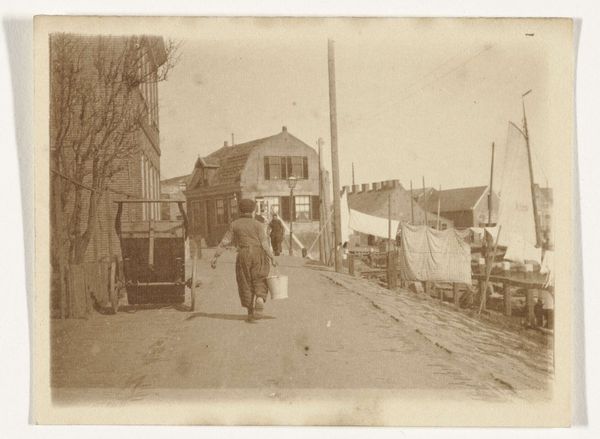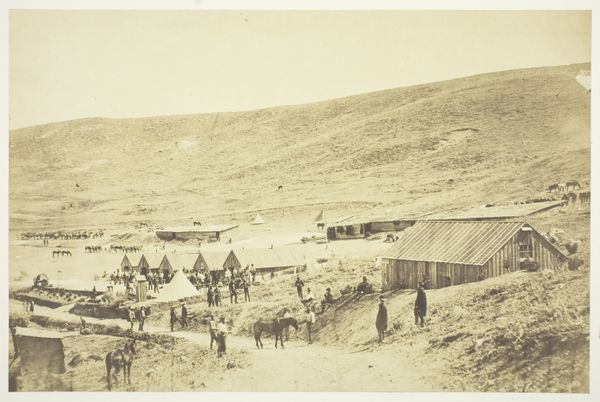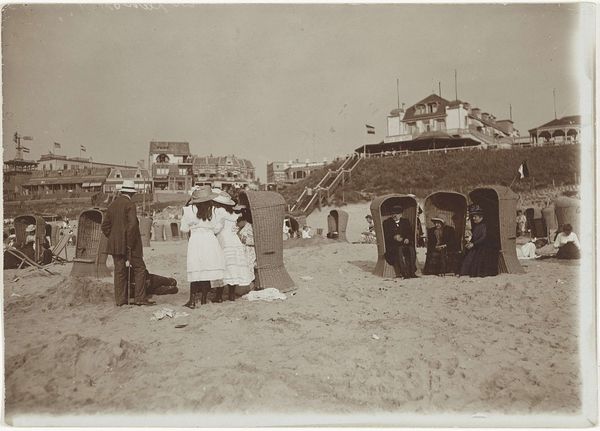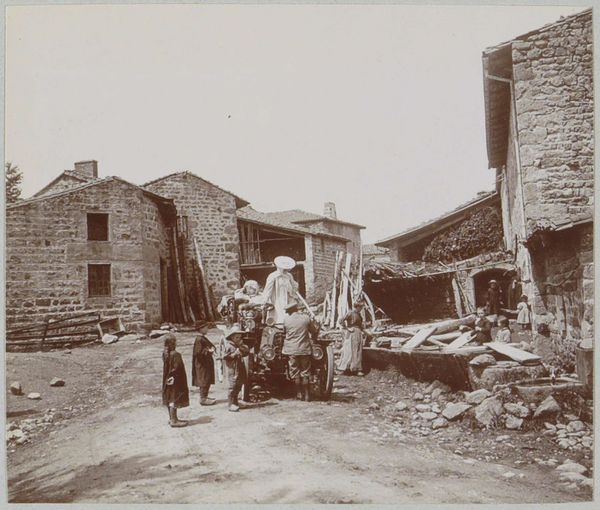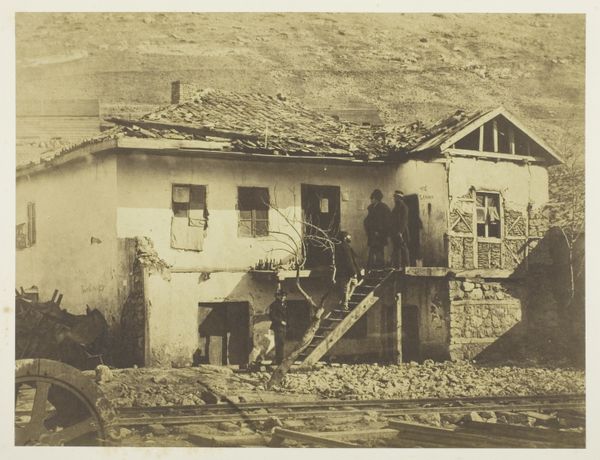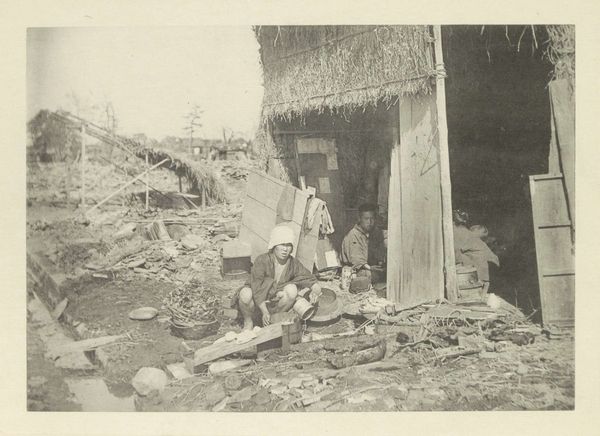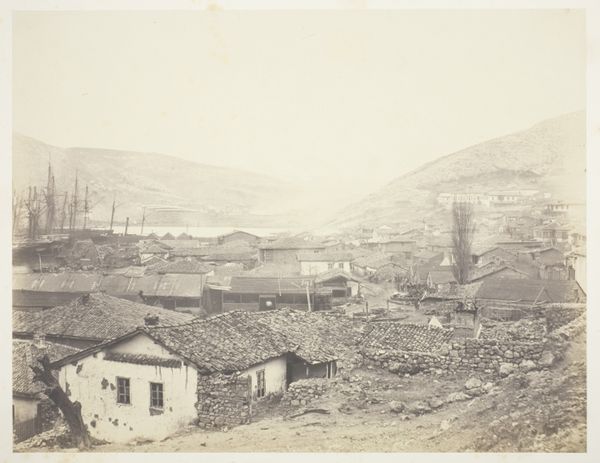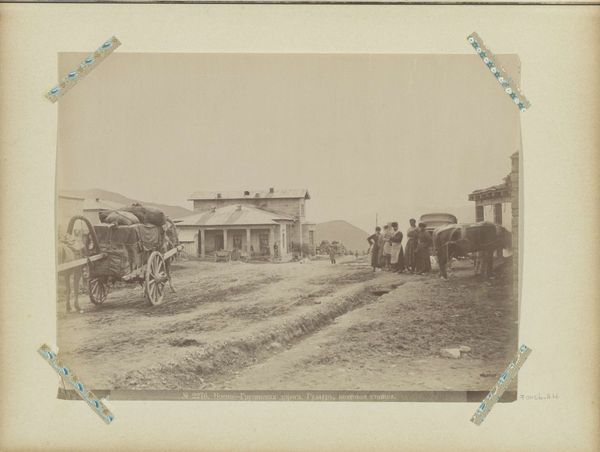
print, photography
#
pictorialism
# print
#
landscape
#
photography
#
genre-painting
#
realism
Dimensions: height 80 mm, width 112 mm, height 314 mm, width 450 mm
Copyright: Rijks Museum: Open Domain
Curator: Here we have Paul Güssfeldt’s photograph, “Houten woningen met dakbegroeiing in Noorwegen”—“Wooden Houses with Vegetation on the Roof in Norway”—from 1889. What's your first impression? Editor: Immediately, I’m struck by a muted atmosphere; a rather stoic stillness conveyed in a range of earth tones. Curator: Agreed. The composition is remarkably balanced. Observe the arrangement of the two cabins; the geometry of the timber work is highlighted, providing a subtle structure to the everyday scene. Editor: The details of daily life offer more than geometry though, wouldn’t you agree? The thatched roofs evoke a sense of heritage, symbolizing shelter and perhaps the simple life, a continuity with ancient practices. They even appear as almost merging with the landscape. Curator: Merging indeed. Pictorialism comes to mind, given the softness achieved in the photographic print, creating almost an idyllic blurring. Though one could argue this is straight photography documenting realist traditions and labor of this era in Norway. Editor: Precisely. Note the human figures gathered seemingly drawing water. One must consider their place in society, within their historical environment, where communal labour plays such a role. Curator: Absolutely. The artist has subtly placed them almost within the architecture. A human element enhancing our engagement with the stark scene. And there are more aesthetic contrasts; notice how the texture of the wooden structures balances with the open space. Editor: It’s like he presents it not just as a place, but a complete system. It invites contemplation on life, how society is formed, and humans have lived in harmony, or struggle. Curator: The interplay and pictorial effect are certainly powerful. There's almost a feeling that these structures grow out of the land itself. Editor: Right—I see it too—reminding us of the layered cultural meanings embedded within the seemingly simple landscape, offering narratives on heritage and tradition. Curator: And, to add one final thought—it all exists, beautifully, within a careful composition and structural form.
Comments
No comments
Be the first to comment and join the conversation on the ultimate creative platform.
